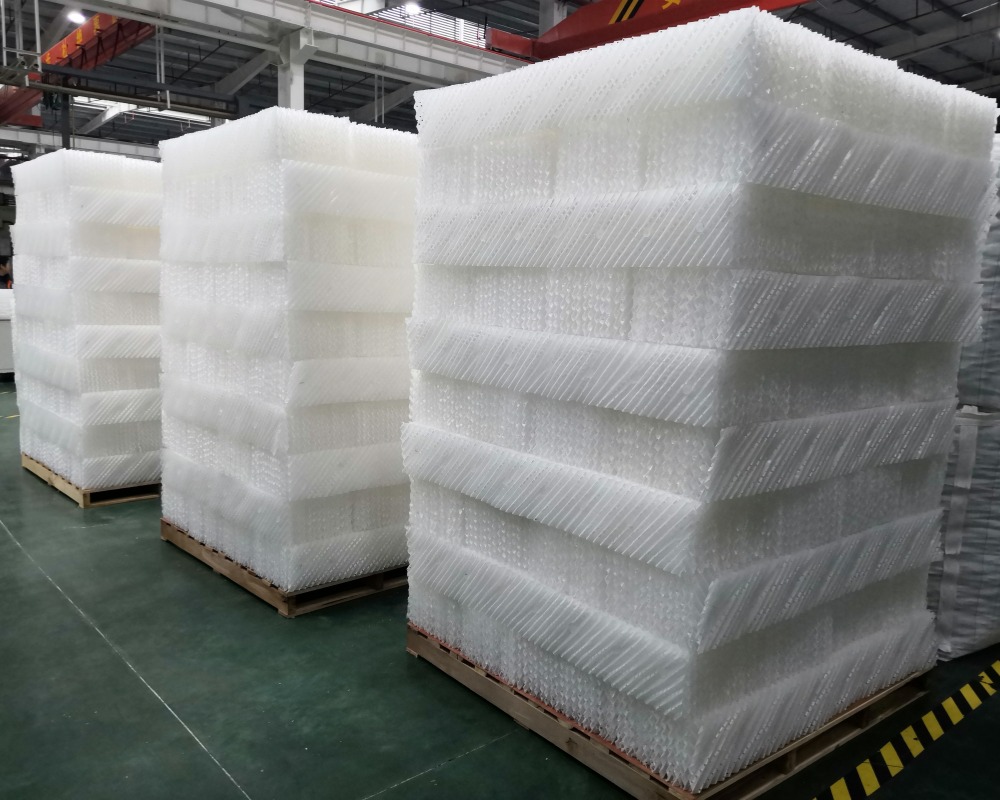To enhance the efficiency of a scrubber using plastic structured packing, a well-organized approach is essential. Here is a structured strategy based on the thought process outlined:
Material Selection
1. Cost-Effectiveness: Opt for plastics that offer a balance between cost and performance, such as PVC for general applications.
2. Chemical Resistance: Depending on the scrubber's environment, select materials like polypropylene or PVDF for resistance to acids, alkalis, or other corrosive substances.
3. Durability: Choose plastics that can withstand the operational conditions, including temperature and mechanical stress.
Packing Design
1. Surface Area: Utilize structured packing with a high specific surface area to maximize gas-liquid interaction.
2. Design Types: Consider honeycomb structures for better gas distribution and corrugated sheets for enhanced mechanical strength and contact efficiency.
Flow Optimization
1. Gas Flow Rate: Adjust the gas flow to ensure sufficient interaction time with the liquid without compromising efficiency.
2. Pressure Drop: Aim for packing that minimizes pressure drop to reduce energy consumption and enhance overall system efficiency.
Environmental Considerations
1. Sustainability: Choose materials and designs that align with sustainability goals, minimizing environmental impact.
2. Recyclability: Opt for plastics that can be recycled to reduce waste and promote a circular economy.

Maintenance and Durability
1. Regular Maintenance: Implement a schedule for cleaning and inspection to prevent fouling and ensure optimal performance.
2. Lifespan Management: Consider the lifespan of the packing material to reduce long-term replacement costs.
By systematically addressing these areas, the strategy aims to maximize the scrubber's performance while ensuring cost-effectiveness, durability, and environmental sustainability. This approach not only enhances operational efficiency but also supports long-term effectiveness and ecological responsibility.